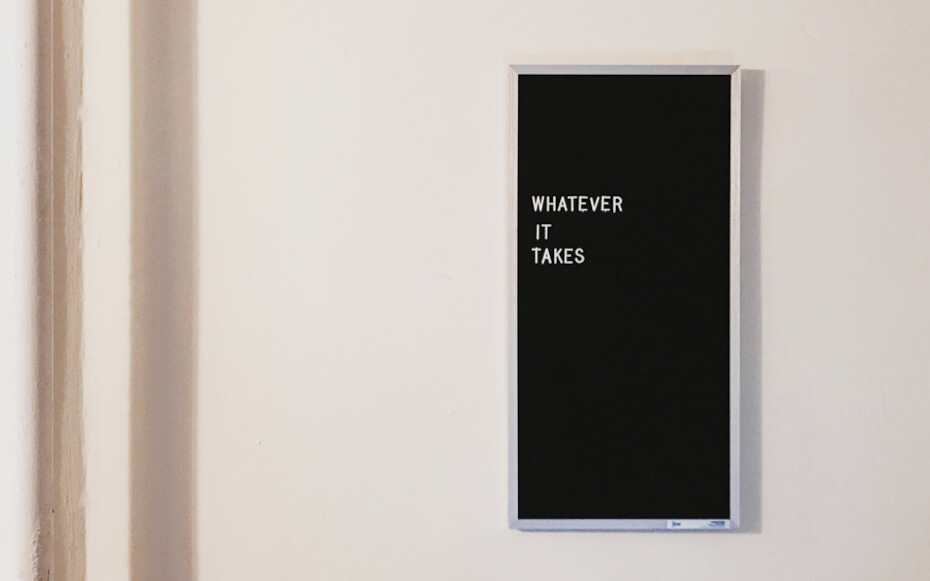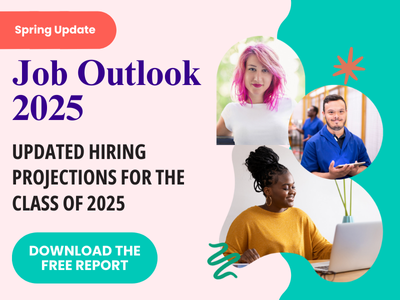NACE Journal, November 2020
The terms “resiliency” and “wellness” are employed in many settings, but how do they impact and what do they mean to our students applying to jobs, internships, and graduate programs, while surviving a global pandemic?
How Do We Identify and Further Develop Resiliency?
Resiliency is the capacity to adapt to and overcome any stressors, trauma, adversity, or situation that is challenging.1 It is an innate motivation and dynamic process whereby people have the opportunity for personal growth in diverse settings. Resilience itself, sometimes referred to as “grit” or “mental toughness,” can look, feel, and sound different to each person as the time and context in which it is applied are major variables. While the COVID-19 pandemic is a new experience for all, the strengths of previous experiences can be engaged not only to survive, but also to find success during these times. Focusing on resilience during various stressful situations, such as applying for jobs or graduate schools, can help students and peers work in more purposeful and holistic ways. It can also create a growth mindset that leads to acknowledging the factors that affect one’s confidence and success both professionally and personally in times of ease and stress.
There are many helpful ways to build and use resilience on top of the ways it is already ingrained through nature and nurture. Relationships have proven to be a key factor in an individual’s ability to practice and increase their capacity for resilience.2 Community-building can be further strengthened through counseling, mentorship, advising, and connecting with family and friends. With their community, students can fight negative thoughts, identify their skills, learn they are not alone in their experiences, and find resources they would not have known existed otherwise. Networking is praised as vital to applying for jobs, but it is crucial to remember that the heart of networking is creating a community.
In addition to the connectedness developed through relationships, resilience can be constructed through connecting to oneself. Through exercises in meditation, individual therapy, faith practices, and personal and professional development, students grow their resilience. Finding time to help others is also an important way to find purpose and self-worth and to help oneself.
Even with each of these pillars to develop resilience, there are various factors that can undermine success. It is necessary to be aware of these considerations to identify and challenge them. When applying to competitive graduate programs, it is difficult for students to stay positive when reading that 1% to 3% of candidates are accepted, learning about the extensive backgrounds of other applicants, and trying to find the time to complete applications while in school or working. Many job seekers also share the fear that their online application is being dropped into “a black hole of applications” or that the cover letter they spent days writing will never even be read. These thoughts are legitimate, but students need resiliency to keep applying when they hear “no” or nothing at all, sometimes for many months. Fear, imposter syndrome, negative self-talk, cognitive distortions, and lack of community can threaten both resilience and well-being. Trial and error and happenstance may also play roles in the progress of resilience through self-awareness. In establishing and maintaining self-awareness and community-building, these factors can be caught and addressed so that students let go of what might feel like a missed opportunity and have the space to accept new experiences.
Wellness as a Foundation of Resilience
Resilience cannot be fully understood without also considering wellness and its protective factors, especially since it is always evolving and adapting to the situation. Wellness captures the emotional, physical, social, economic, and psychological aspects of a person’s well-being. Individual well-being will undoubtedly affect resiliency levels in a stressful situation. The capacity for resilience is not stagnant and can present in many forms.3 Some questions to think about include:
- Am I engaging in my activities and work?
- Does my body feel cared for?
- Am I happy with how I spend my time and make my choices?
Maslow’s hierarchy of needs explains that, if basic physiological and safety needs are not met, then belonging, self-esteem, and self-actualization cannot be reached.4 In thinking about this through the perspective of the current pandemic, if a graduate student does not have food, shelter, or their health, then they do not currently have the basic needs to focus on their ideal job search for post-graduation, their research goals, or an unpaid internship. Instead of searching for the dream position to grow in their career or further their education, they are more motivated to find something stable and safe that can fund their basic needs. Therefore, to better their resilience and wellness during this current life stressor, students must first take care of their necessities. This can apply to their emotional health—taking the time to process the fear and losses they feel. This can present in their social wellness—taking the time to connect with their loved ones and practice empathy. This can also be their economic wellness—feeling secure in their finances to take care of other goals. After years of tireless work, this can be a shocking realization. It takes compassion from their community, and themselves, to stay resilient through this phase especially. Once they feel that basic needs and wellness are met, they may have the opportunity to explore their career and higher education options, discover what success looks like for them, and better serve their community and the greater society. When working with students, now more than ever, it is vital to meet them where they are.
Mindfulness is an outstanding way to evolve wellness and, in turn, resilience. Through mindful practices, students can identify their coping strategies and build self-awareness to guide them through these stressful times and future ones. Journaling, breathing exercises, meditation, physical activity, and focusing on specific tasks are a few ways to build mindfulness. Mindfulness-based stress reduction can combat a variety of stressors, including the existential, personal, and academic ones students and graduates face.5
Identifying Career Success
As students identify more ways to reinforce resilience, they will most likely find the space to truly examine what they want to pursue in their careers. When looking at jobs during this pandemic particularly, they will probably find that they are asking themselves why they are pursuing what they are pursuing and if it is even possible at this time. Career success for many is finding purpose in their work. According to the Japanese philosophy of life-satisfaction—or “Ikigai”—life’s purpose is found at the intersection of what we love, what the world needs, what we can get paid for, and where our strengths lie.6 During the COVID-19 pandemic, for many people the focus has shifted to the intersection of what the world needs and what they get paid for, which is specifically more vocational in nature. This highlight on vocation can influence how students feel they are working toward their purpose, since their mission or passion may not be addressed.
There are new ways during this time of societal changes when traditional resources may not be as accessible, but there are also new resources that are becoming available to improve resilience. For example, remote work can be beneficial in building resilience through self-care by getting time back that was previously dedicated to commuting. There is also significant value in the de-stigmatization of seeking mental health support during a traumatic event, such as this pandemic, as it can provide those who did not seek or address it before a chance to improve their well-being. This can be the time to process mental health needs, imposter syndrome, stigmas, and barriers to resources that might have threatened feelings of resilience. Even though there are also feelings of isolation and lack of in-person interactions, there may also be more feelings of support as distant communities are brought closer virtually. This time specifically can also lead to students feeling more successful in their careers by engaging the virtual opportunities for professional development that may have been too expensive or difficult to attend in the past. Many professional organizations are providing free webinars, workshops, conferences, and certification programs. Focusing on specific tasks and finding a sense of control over a part of their lives is also a strategy to cope with the current situation that can further both resilience and career development.
Now is also an advantageous time to reach out to networks for informational interviews. Learning about someone else’s story, application process, industry knowledge, search strategies, and general advice can prepare students for what is realistic while maintaining a growth mindset. They might learn that some of their thoughts about applying to jobs or graduate programs were based on myths, negative self-talk, or out-of-date information. Students have benefited from reaching out on LinkedIn, university alumni groups, and their larger personal network. Informational interviews can lead to developing a mentorship, stronger network, and the skills to build positivity and resilience throughout their careers. This is also a valuable time to take assessments on interests and skills, such as the Myers-Briggs Type Indicator (MBTI) or O*NET Interest Profiler (IP), and discuss them with a career counselor. The knowledge gained through reflecting on these assessments can provide students with the language, examples, and overall awareness for networking and applications. Students flourish immensely in their self-awareness from these informational conversations and find the best ways to tell their stories and curate their experiences for their career goals.
What Is Next?
While many support systems are focusing on how to survive the pandemic, the resiliency built now will be needed to thrive in all facets of life, including the unexpected. It can also be tested in many ways, chiefly through time, as resilience is a capacity that is ever-changing. Whether it is the amount of time it takes to work on applications, the time it takes to find the right job, or the time waiting to hear back from competitive graduate programs, time can test anyone’s resilience. Students might find themselves more confident when they initially send out their resumes and cover letters, but may begin to believe negative thoughts about their application materials, the industry, or themselves when they do not hear back in a timely manner. Many systems have been delayed during the pandemic, and students are being patient and understanding of this, but the durability of their resiliency is still tested.
To prepare for the unknown, using what they have and recognizing what they still need, it is valuable for students to consider the connections between their thoughts, emotions, and behaviors. When working with students, it is beneficial to consider the elements of the cognitive behavioral model used in cognitive behavioral therapy (CBT) and how they can positively impact the development of resilience by addressing how automatic thoughts affect reactions.7 For example, thinking that every other applicant is more prepared can make students feel inadequate with their application, which in turn can lead to them freeze up during interviews and be unable to communicate why they are an ideal candidate. On the other hand, if students practice interviewing and have time to identify their strengths, they can go into the interview thinking about the useful experiences they have to offer, feeling more positive and excited about their applications, and therefore being better able to speak to their most relevant skills and goals. If resilience is built through all-around wellness and flexibility, then students can withstand these cognitive distortions and the test of time.
Working with a career counselor to identify their strengths, practicing countering negative thoughts, and applying their resilience in different settings can equip students with the ability to overcome these challenges. The world of work is always changing due to many factors, including the economy, technology, society, or, in this case, a pandemic that impacts all areas of life. It is imperative for career services professionals to collaborate with students in understanding these changes, reflecting on their intricate nature, and adjusting to them as needed. No matter what comes next, students will be ready through their adaptability and resilience. While this may feel like an impossibly difficult time, it is essential to remind students that this is also a temporary time that still offers the chance to keep developing as individuals. Students have shown tremendous resiliency throughout their educational careers already and have the knowledge, skills, and experience to apply it toward continuing their education and seeking jobs, even amidst a global pandemic.
Endnotes
1 Masten, A. S., & Reed, M. J. (2002). Resilience in development. In C. R. Snyder & S. Lopez (Eds.), Handbook of Positive Psychology (pp. 74–88). Oxford, UK: Oxford University Press.
2 Wilks, S.E., & Spivey, C.A. (2010). Resilience in Undergraduate Social Work Students: Social Support and Adjustment to Academic Stress, Social Work Education, 29:3, 276-288, DOI:10.1080/02615470902912243.
3 PeConga, E. K., Gauthier, G. M., Holloway, A., Walker, R. S. W., Rosencrans, P. L., Zoellner, L. A., & Bedard-Gilligan, M. (2020). Resilience is spreading: Mental health within the COVID-19 pandemic. Psychological Trauma: Theory, Research, Practice, and Policy, 12(S1), S47–S48.https://doi.org/10.1037/tra0000874.
4 Maslow, A. H. (1943). A theory of human motivation. Psychological Review, 50(4), 370–396.https://doi.org/10.1037/h0054346.
5 Rosenzweig, S., Reibel, D.K., Greeson, J.M., Brainard, G.C., & Hojat, M. (2003). Mindfulness-Based Stress Reduction Lowers Psychological Distress In Medical Students, Teaching and Learning in Medicine, 15:2, 88-92, https://doi.org/10.1207/S15328015TLM1502_03.
6 Shirai, K., Iso, H., Fukuda, H. et al. (2006). Factors associated with "Ikigai" among members of a public temporary employment agency for seniors (Silver Human Resources Centre) in Japan; gender differences. Health Qual Life Outcomes 4, 12. https://doi.org/10.1186/1477-7525-4-12.
7 Padesky, C. A. & Mooney, K. A. (2012). Strengths-based cognitive-behavioural therapy: A four-step model to build resilience. Clinical Psychology and Psychotherapy, 19(4):283–90. doi: 10.1002/cpp.1795.







